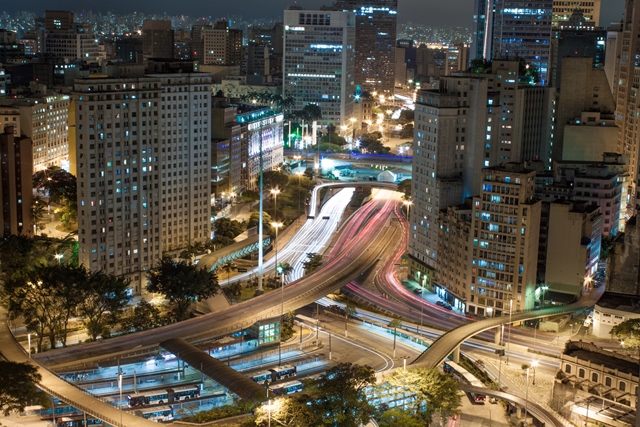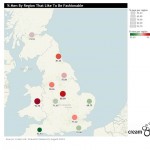Brazil’s Wealth Revolution – Trends, Opportunities and Challenges
Readers of The Future of Luxury can purchase the Brazil Wealth Segments by Ledbury Research with an exclusive 20% discount. To receive the report for £340 (discounted from £400 for a single user license) or £640 (discounted from £800 for a multi-user license) simply email [email protected] quoting TFOL22. Alternatively, please follow this link and enter TFOL22 in the notes area of the payment page.
As Brazil enters the global spotlight with the World Cup and Olympics on the horizon, an increasing number of luxury brands are looking at opportunities within the market. Luxury market specialists, Ledbury Research have just released three new studies exploring the spending habits and trends of high net worth individuals in Brazil.

The studies, part of Ledbury Research’s Wealth Segment series, present a detailed analysis of the opportunities, trends and challenges for organisations involved with wealth management, retail and services.
The report identifies three distinct groups; Independent Leaders, Discerning Dynasts, and Boom Benefactors and goes on to examine the lives, behaviours, attitudes and beliefs of each.
‘Independent Leaders’ Are Driving Wealth Creation In Brazil
A new generation of young entrepreneurs are leading Brazil’s wealth revolution. In the latest Wealth Segment report series, Ledbury Research identifies these ‘Independent Leaders’ as just one of three of the latest groups of wealthy individuals to be watched in the emerging Brazilian marketplace alongside Discerning Dynasts and Boom Benefactors.
Money Equals Independence: Who Are The Independent Leaders?
Creative and dynamic, these 25-40 year olds have had wealthy upbringings. However as the 4th generation, they chose not to join the family business and started their own instead after gaining several years of work experience where they worked from the bottom-up. Nicola Ko, Senior Luxury Analyst at Ledbury Research, expands, “Their privileged backgrounds have not impacted their work ethic. They are still extremely driven to make their own money because they view money as a symbol of independence.”
Nevertheless, their parents would have supported them with capital to start their own businesses, which are typically in creative industries such as fashion, design, arts, advertising, communication and technology. We have seen the total number of millionaires (with over $1million in investable assets) within Brazil increase from 345,000 in 2010 to a forecast of over 383,000 in 2013.
How Luxury Brands Can Tap Into The Wealth Of The Cultured Young
With major global events such as the 2014 World Cup and the 2016 Olympics taking place in Brazil an increasing number of luxury brands are looking at opportunities within the market. At the moment, Louis Vuitton has 5 points of sale already in Brazil (Sao Paolo, Rio and Brasilia) and Ferrari has 1 dealership in San Paolo. Each year, since 2009, we have tracked some key luxury brands including Cartier, Tiffany, Bulgari, LV, Burberry, Gucci, Ralph Lauren, Armani and Chanel. In 2009 they had a total of 13 stores within the country which has increased to 21 stores in 2012.
Independent Leaders have a particular affinity with one-of-a-kind pieces, be it from local designers or international. They love travelling; New York, Miami, Paris and London are key destinations for them to relax and also to shop. Another defining feature is that they are extremely in tune with the arts. This is a function of the exposure that their parents gave them during their childhood, their international education and also the industry that they are in. Musicals, plays and operas are therefore extremely popular, as are art galleries and exhibitions.
Luxury brands that can offer an appreciation or a strong relationship with the arts therefore have a clear advantage with this segment. Collaborating with artists to create limited edition products, holding events at museums, and communicating artisanship could all offer opportunities for brands to target these cultured youths.
Brazil – The Facts & Figures You Need To Know
Brazil is the largest economy in South America and the eighth biggest economy globally. Following the 2009 recession, consumer and investor confidence revived and GDP growth reached 7.5% in 2010 – the highest growth rate in the past 25 years.
The country has a tightly regulated, domestically focused, cash-rich economy, and is continuing to stick to orthodox macro-economic policies. In addition, Brazil’s banks are profitable and well capitalised. Large capital inflows over the past year have contributed to the rapid appreciation of its currency and led the government to raise taxes on some foreign investments.
Brazil’s richest 165,000 individuals increased their total wealth by 3.7% to just over $4 trillion last year (eFinancialNews). This ranks it third in the world by value and 12th by number of individuals. Only the US and Japan outranked it on high net worth value.











